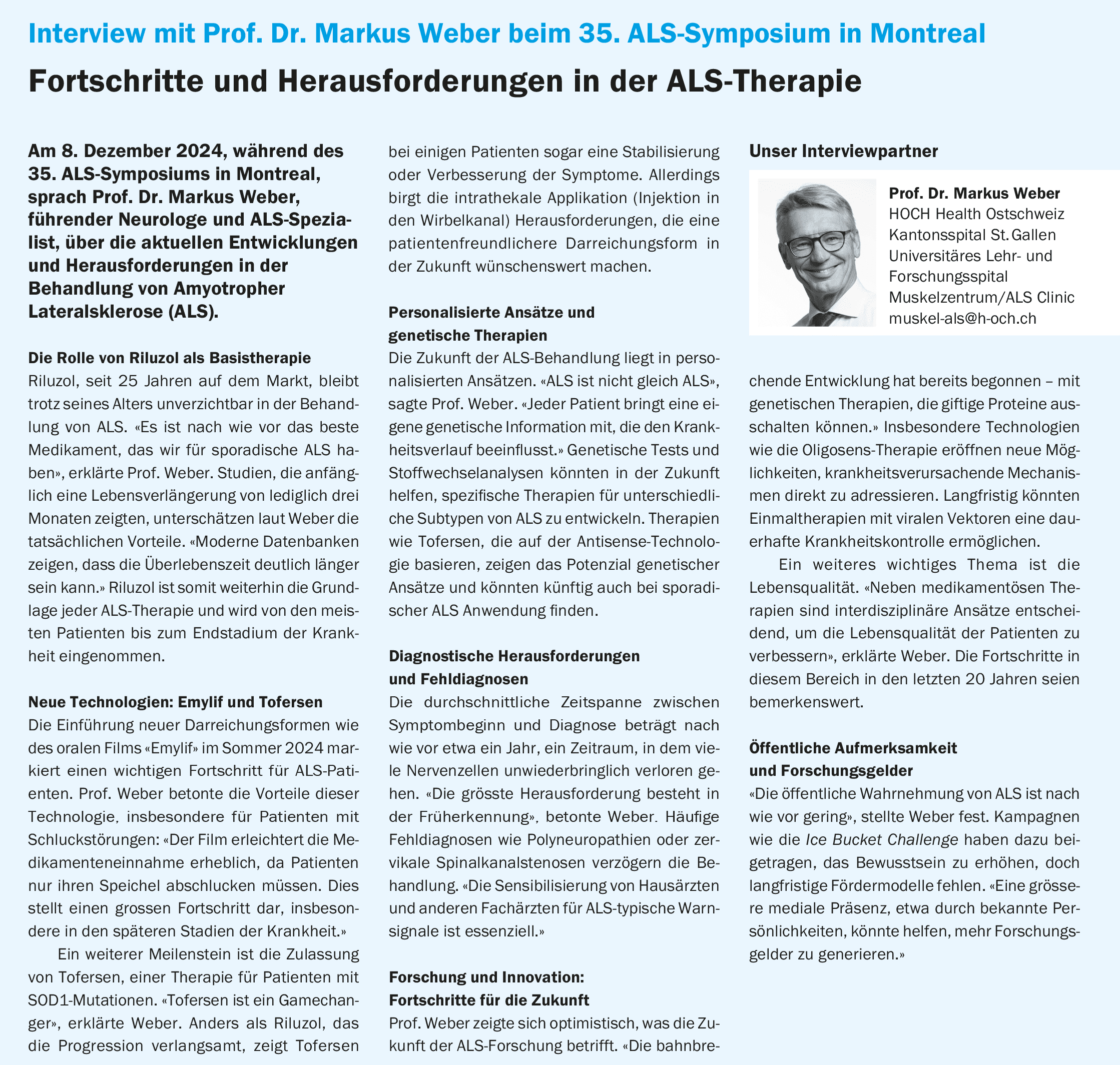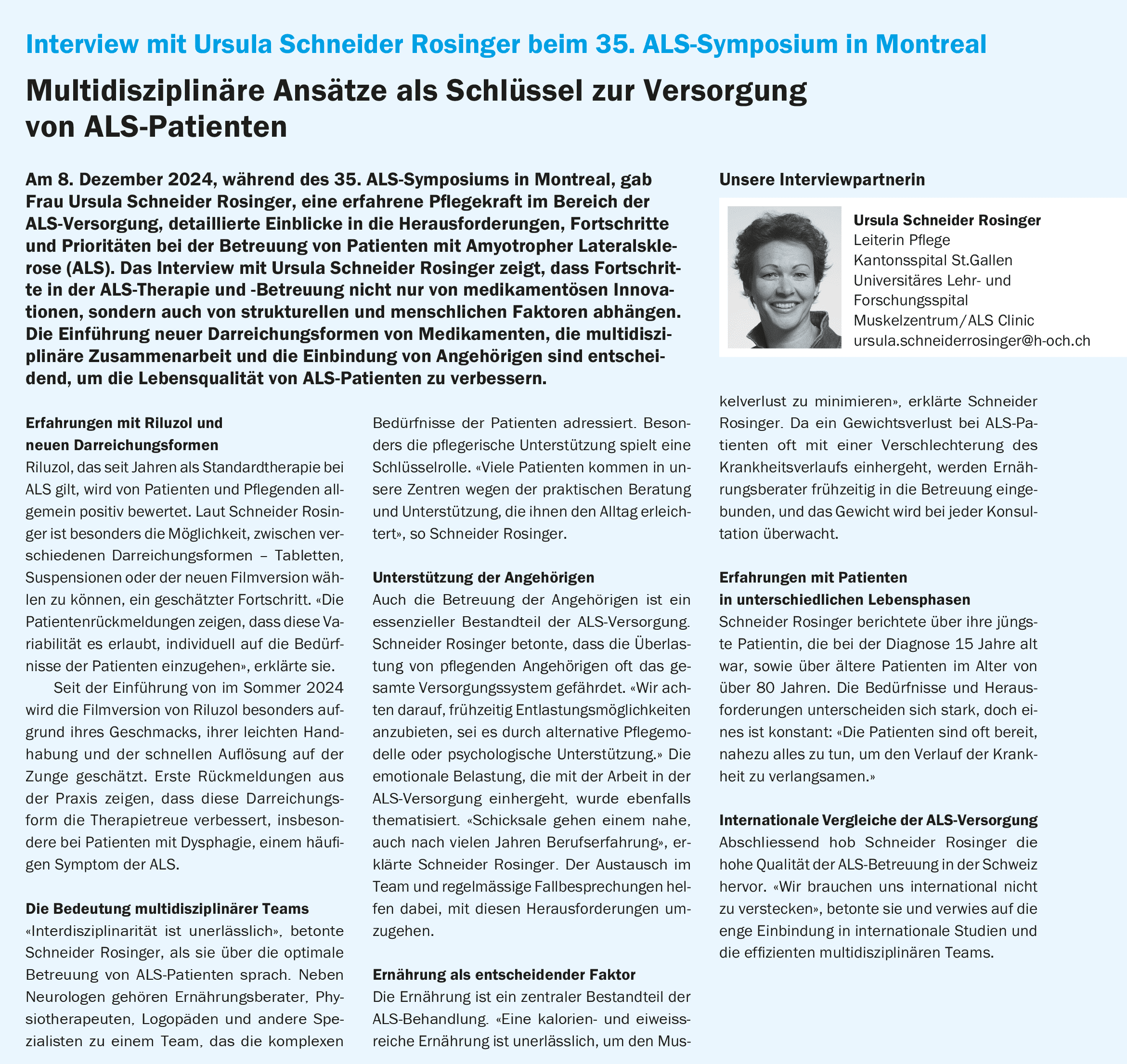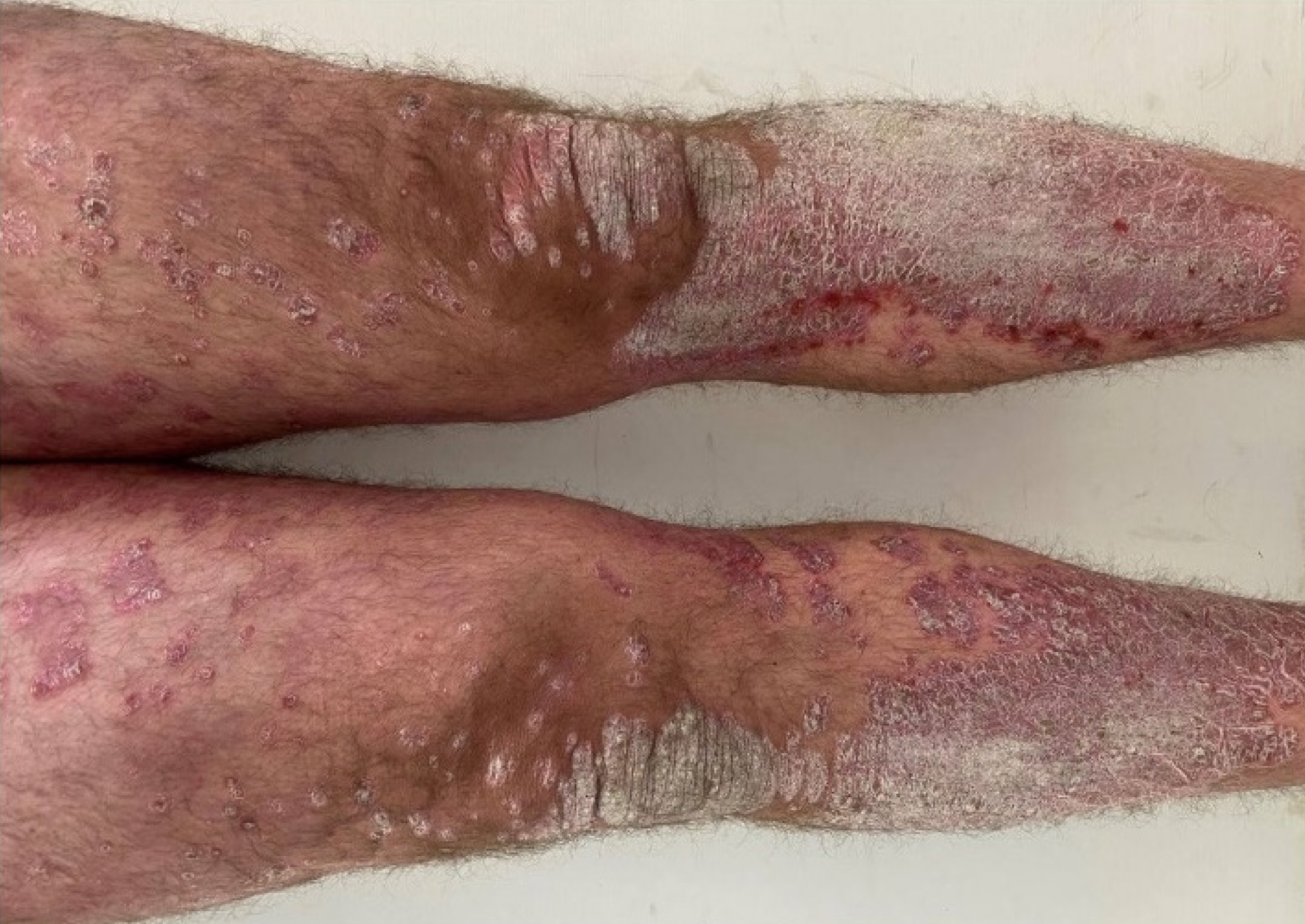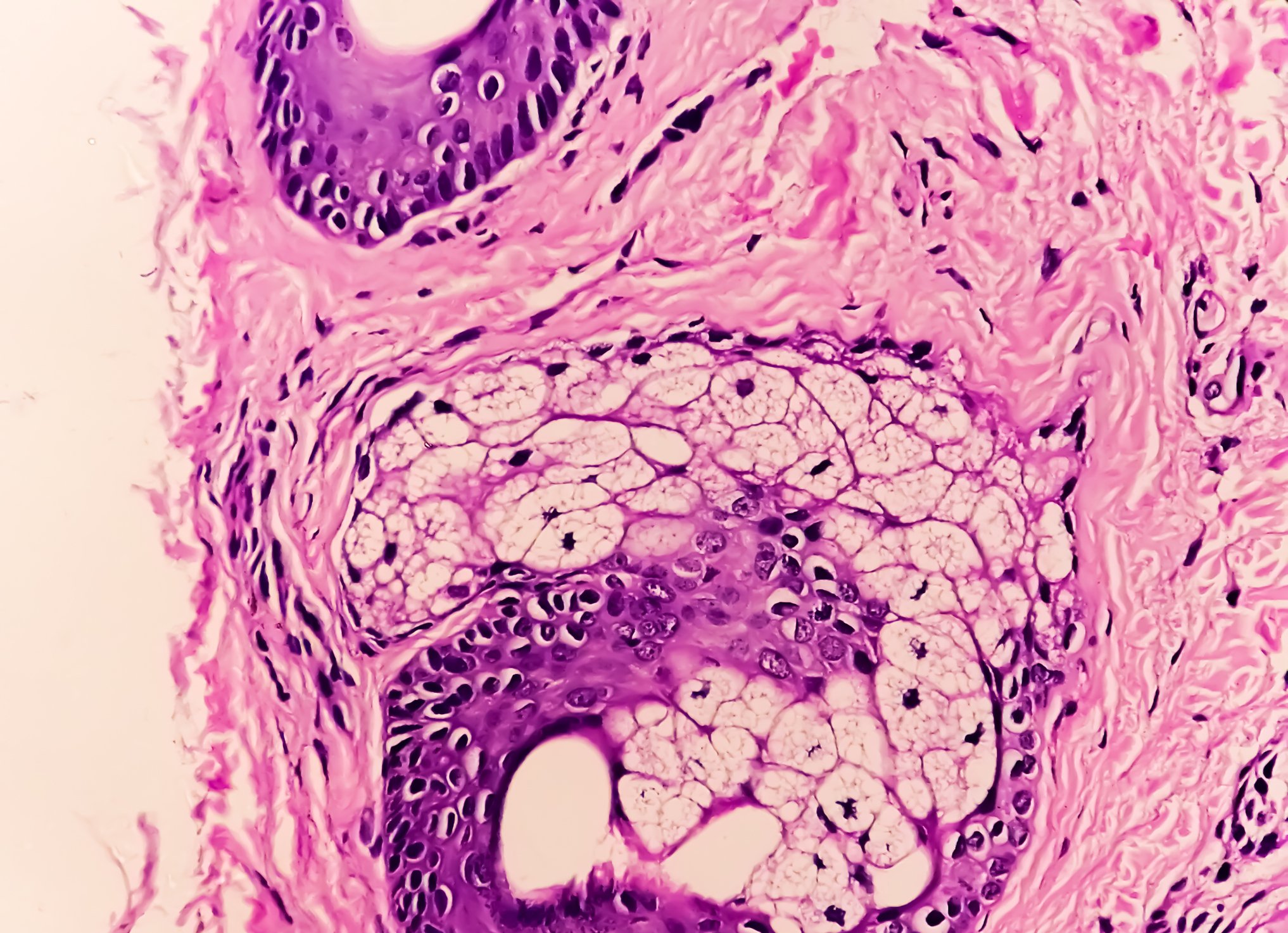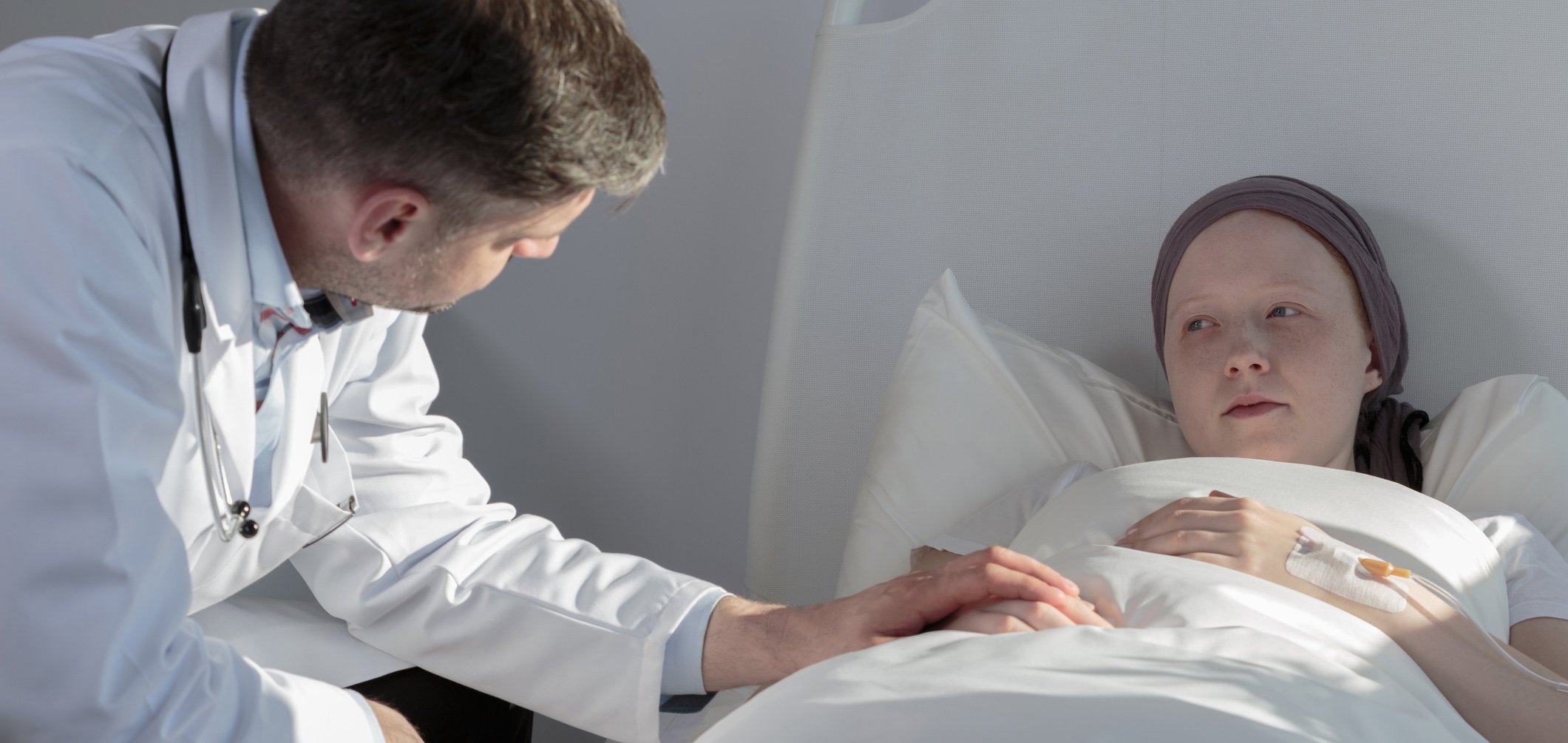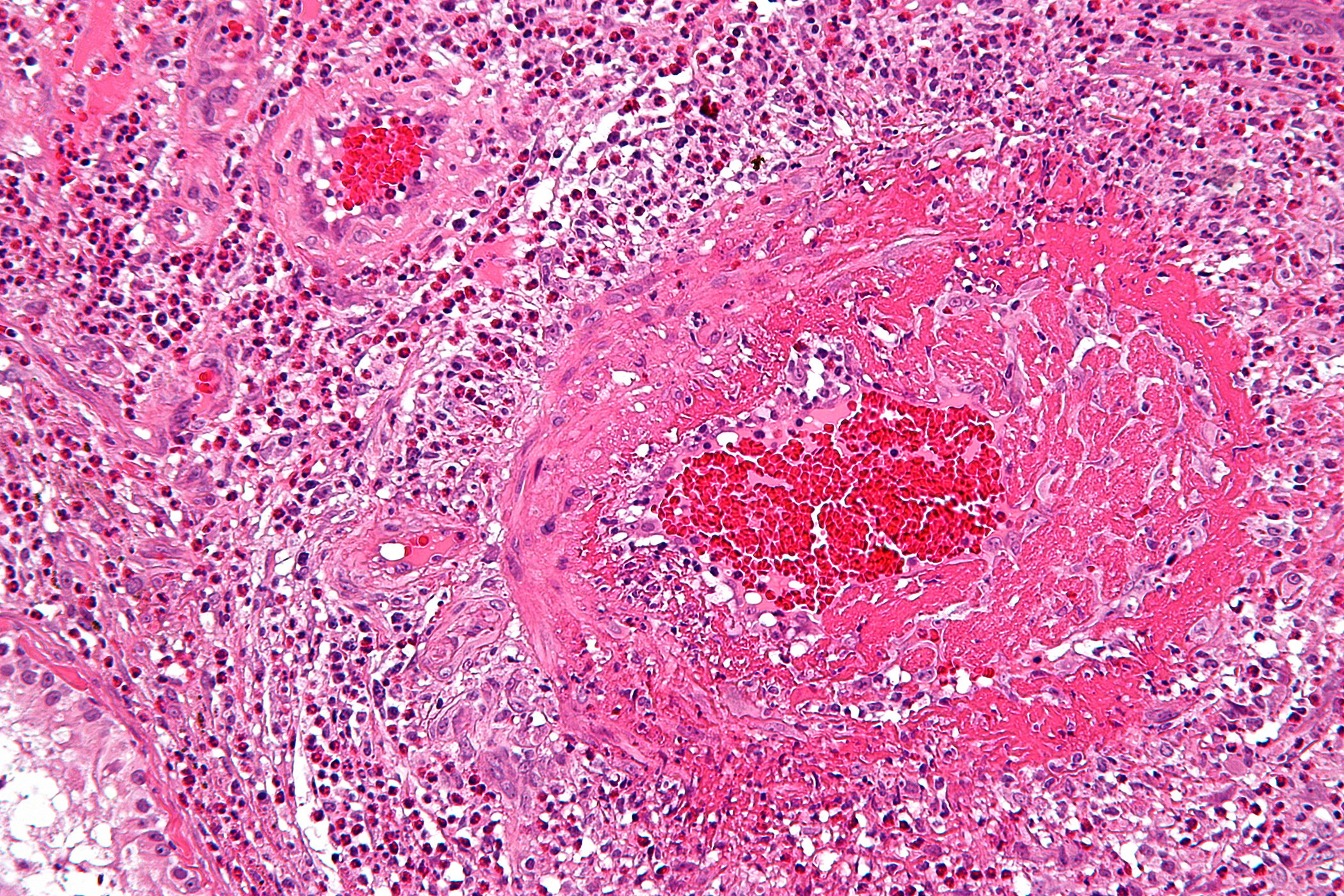Amyotrophic lateral sclerosis (ALS) is a rapidly progressing, as yet incurable neurodegenerative disease that poses considerable medical, therapeutic and social challenges. Despite its comparatively low prevalence, ALS represents a central issue in neurological research due to its complexity and severity. New findings on molecular pathogenesis, the role of genetic factors and the development of innovative therapeutic strategies open up promising prospects for diagnosis, treatment and care.
You can take the CME test on our learning platform after you have reviewed the recommended materials. Please click on the following button:
The 35th ALS Symposium, held in Montreal in December 2024, brought together leading experts from around the world to discuss the latest advances in the diagnosis and treatment of amyotrophic lateral sclerosis (ALS). Keynote speakers included Prof. Dr. Markus Weber, a leading Swiss neurologist and expert in genetic therapies, and Prof. Dr. Vincenzo Silani, who presented important contributions on multidisciplinary treatment and biomarker developments. The symposium focused on three main topics:
- Genetic therapies: Tofersen, an antisense-based therapy for the treatment of SOD1 mutations, was in particular focus.
- New diagnostic approaches: The role of biomarkers such as neurofilament light chains (NfL) was intensively discussed.
- Innovative therapies and dosage forms: Advances in orally soluble enamel films and their potential impact on treatment adherence were presented.
Prof. Weber emphasized: “We are experiencing a paradigm shift in ALS therapy, driven by precision genetic therapies and innovative approaches to improve patients’ quality of life.” The discussions and results of the symposium provide a valuable basis for the future development and optimization of ALS treatment.
ALS: Epidemiology and disease overview
The global incidence of ALS is 2-3 cases per 100,000 people per year. In Europe, the prevalence is estimated at around 6 per 100,000. Men are affected slightly more often than women, with the ratio being around 1.3:1. While the disease typically occurs between the ages of 50 and 70, sporadic cases can also be observed in younger age groups.
Genetic mutations play a role in around 10% of ALS cases. The most common include
- SOD1: Causes about 20% of familial cases.
- C9orf72: The most common genetic cause of both familial and sporadic ALS.
- TARDBP and FUS: Rarer, but strongly associated with certain phenotypic expressions.
Sporadic ALS, which has no clearly identifiable genetic causes, accounts for around 90% of cases. Environmental factors such as toxins, physical stress and possibly a viral etiology are still being investigated.
Clinical presentation and course: ALS shows considerable clinical heterogeneity. Early signs include focal muscle weakness and muscle twitching. As the disease progresses:
- Dysphagia: Difficulty swallowing, which often leads to weight loss.
- Respiratory complications: Progressive weakness of the respiratory muscles.
- Cognitive changes: Up to 50% of patients develop cognitive or behavioral symptoms, while about 10% suffer from frontotemporal dementia (FTD).
Pathophysiology
The pathogenesis of ALS is multifactorial and includes:
- Glutamate-induced neurotoxicity: Excess glutamate leads to overactivation of NMDA receptors, which promotes neuronal death.
- Oxidative stress: overproduction of reactive oxygen species due to mitochondrial dysfunction.
- Misfolded proteins: Aggregation of TDP-43 and SOD1 in motor neurons.
- Neuroinflammation: Microglia and astrocyte activation contribute to neuronal degeneration.
Guidelines and current therapeutic approaches
EAN Guidelines 2024: The European Academy of Neurology (EAN) updated its guidelines for the treatment of ALS in 2024. The recommendations include:
- Riluzole remains the standard therapy. It shows moderate survival benefits and should be initiated early after diagnosis.
- Multidisciplinary care: Integrated care by neurologists, physiotherapists, nutritionists and psychologists is considered essential.
- Palliative approaches: The focus on improving quality of life and symptomatic treatment remains central.
Standard therapy: Riluzole: Riluzole has been the basic therapy for ALS for over 25 years. It inhibits presynaptic glutamate release and has a neuroprotective effect. Studies show:
- A median extension of survival time by 3-5 months.
- Lower progression rates in the early stages of the disease.
- Long-term data from registry studies indicate a survival benefit of up to 19 months.
Riluzole is well tolerated, but side effects such as nausea, fatigue and liver enzyme elevations can occur. Adherence remains a challenge, particularly in patients with dysphagia, which necessitates the development of alternative dosage forms.
Innovation: Oral Riluzole film
An orally soluble enamel film, which was developed as an innovation specifically for patients with swallowing disorders, offers the following advantages:
- Easy to use: No water supply required.
- High bioavailability: comparable to tablets.
- Improved quality of life: studies have shown a significant increase in treatment adherence of 25%.
Nurse Ursula Schneider reported in Montreal: “Patients appreciate the ease of use and the pleasant taste. The film has significantly improved adherence in our center.” Prof. Weber added: “This formulation offers an important advance in patient care.”
News from the ALS Symposium
- Genetics and pre-symptomatic and early diagnosis
Preventive studies in ALS – the ATLAS study: A central topic was the ATLAS study (lead researcher: Prof. Timothy Miller, Washington University), which focused on pre-symptomatic interventions in genetically vulnerable individuals, particularly in carriers of SOD1 mutations. The aim was to use biomarker monitoring such as neurofilament light chains (NfL) to initiate early therapeutic interventions before clinical symptoms appear. The results show that in certain biomarker constellations, treatment with Tofersen could be initiated before the onset of clinical symptoms and progression could be significantly delayed. Prof. Miller emphasized: “These results open up a new era of targeted therapy for genetically defined ALS cases.”
CRISPR technologies – new horizons in ALS research
Another highlight of the symposium was the presentation by Dr. Emmanuelle Charpentier, who presented preclinical advances in the use of CRISPR-Cas9 for the genetic correction of ALS mutations. The results were particularly relevant in the treatment of C9orf72 mutations, the most common genetic cause of ALS. The data presented showed that CRISPR-based interventions have the potential to directly address the underlying pathogenic mechanisms. Dr. Charpentier emphasized: “The translation of these technologies into clinical practice could mean a revolution in the treatment of ALS.” At the same time, challenges such as the targeted delivery of CRISPR components and possible off-target effects were discussed, which need to be further explored.
Genetic relationship analysis
Dr. Sarah van Blitterswijk (Mayo Clinic, USA) presented a method for analyzing genetic relatedness between ALS patients. This technique has the potential to identify previously unknown genetic risk factors. Initial results suggest that certain haplotypes that are preserved across generations could provide new starting points for research into the disease.
Panel discussion on biomarkers and early diagnosis: In a panel discussion chaired by Prof. Dr. Vincenzo Silani, the growing role of biomarkers such as neurofilament light chains (NfL) and phospho-tau in the early diagnosis and progression assessment of ALS was discussed. It was emphasized that biomarkers not only contribute to diagnosis, but can also help to precisely assess treatment success. “The introduction of standardized biomarkers into clinical practice will significantly increase the efficiency and targeting of future therapies,” explained Prof. Silani. Initial results from longitudinal studies have shown a correlation between NfL values and the rate of disease progression, which underlines their importance as predictive markers.
| Continuity of treatment in ALS: challenges and benefits of riluzole therapy |
| The continuous and precise administration of medication is a central component of chronic disease management. Studies show that lack of adherence to treatment is associated with suboptimal health outcomes. However, in progressive and neurodegenerative diseases such as amyotrophic lateral sclerosis (ALS), functional limitations and symptoms present additional barriers to treatment continuity. ALS therefore requires innovative approaches to ensure continuity of treatment throughout the course of the disease. ALS is a rapidly progressing neurodegenerative disease with no cure. With a median survival time of around three years from symptom onset, riluzole remains the gold standard therapy. Studies show that riluzole can extend survival time by 6 to 19 months, especially if treatment is started early. |
| Improved survival rates Data suggest that riluzole prolongs survival in all stages of ALS, including late-stage disease. For example, a retrospective analysis showed that riluzole provides a survival benefit in both the early and terminal stages (stages 1 and 4 of the King’s staging system). In addition to prolonging survival, riluzole slows the loss of motor function, particularly in patients with bulbar onset of the disease. This effect is confirmed by modified Norris scales, which show functional stabilization with early initiation of riluzole therapy. |
| Therapy continuity |
| Diagnostic delays The average time from symptom onset to diagnosis is one year. During this time, patients lose up to 50% of their motor neurons, which significantly limits the effectiveness of treatment. Early diagnosis is therefore crucial. |
| Alternative formulations of Riluzole |
| Suspension The oral suspension introduced in 2018 makes it easier for patients with dysphagia to take riluzole. It can be administered directly via an enteral feeding tube, but many patients report an unpleasant taste, which can affect adherence. Orodispersible films Riluzole films dissolve and do not require water for ingestion. This dosage form improves practicability and is particularly – but not only – suitable for patients with advanced dysphagia. Studies show a high level of acceptance and safety, with oral hypoesthesia being the most common side effect. Perspectives An ideal approach would be the early prescription of orodispersible films to avoid treatment discontinuations due to dysphagia. Such formulations could be used from diagnosis to the late stages of the disease, minimizing the psychological and functional stress of a formulation change. The development of additional innovative dosage forms remains a priority to further improve the quality of life of ALS patients. |
| Further reading: – Anghel LA, et al: An overview of the common methods used to measure treatment adherence. Med Pharm Rep 2019; 92(2): 117-122. – Introna A, et al: Adherence to riluzole in patients with amyotrophic lateral sclerosis: an observational study. Neuropsychiatr Dis Treat 2018; 14: 193-203. Published 2018 Jan 4. doi:10.2147/NDT.S150550. – Silani V, et al: Continuity of treatment in ALS: Benefits and challenges of maintaining riluzole over the course of the disease. J Neurol Sci 2024; 461: 123038. doi:10.1016/j.jns.2024.123038. – Van Damme P, et al: European Academy of Neurology (EAN) guideline on the management of amyotrophic lateral sclerosis in collaboration with European Reference Network for Neuromuscular Diseases (ERN EURO-NMD). Eur J Neurol 2024; 31(6): e16264. – Ludolph AC, et al: The preferences of people with amyotrophic lateral sclerosis on riluzole treatment in Europe. Sci Rep 13, 22497 (2023). https://doi.org/10.1038/s41598-023-49424-3. |
RNA splice variants
Dr. Adrian Isaacs (University College London) discussed the role of RNA splice variants as potential markers for early disease processes. In particular, alternative splicing patterns in the TARDBP gene were highlighted, which occur significantly more frequently in ALS patients.
2. clinical studies
ADORE study on edaravone (FNP122): The ADORE study, led by Prof. Richard Bedlack (Duke University), investigated the efficacy and safety of a new oral form of edaravone, which is currently approved in intravenous form for the treatment of ALS. Unfortunately, the results showed no significant difference to the placebo group in terms of slowing disease progression. This was a setback for the further development of this drug, but also highlighted the need to better understand the mechanisms of edaravone.
PrimeC study: Combination of ciprofloxacin and celecoxib: Dr. Ofer Levy (NeuroSense Therapeutics) presented data from a Phase 2a study with PrimeC. The study investigated the synergistic effect of ciprofloxacin and celecoxib. After a 12-month treatment phase, the study showed safety data and initial indications of a possible slowing of progression. However, the number of patients was limited and larger studies are needed to confirm the results.
Methylcobalamin study: A Japanese phase 3 study led by Prof. Hideyuki Okano (Keio University, Japan) on high-dose methylcobalamin (vitamin B12) in early-stage ALS showed promising results. Patients treated within six months of symptom onset showed slower deterioration of motor skills. Although these results are encouraging, it was emphasized that further international studies are needed to validate the efficacy of this therapy.
3. experimental medicine and study design
Platform trials: Dr. Merit Cudkowicz (Massachusetts General Hospital) explained the concept of platform trials using the example of the HEALEY ALS Platform Trial. This model makes it possible to test several active substances at the same time and to use a common placebo group. This reduces the number of patients and speeds up the duration of the trial.
Artificial intelligence in trial optimization: The use of artificial intelligence (AI) was highlighted as groundbreaking for the optimization of clinical trials. Prof. Aarti Sarwal (Wake Forest University) discussed the use of AI in trial planning. Digital twins, which create virtual models of patients, enable more precise prognoses and better adaptation of study designs.
Tau proteins as biomarkers: Dr. Rosa Rademakers (Mayo Clinic) presented new data on total tau and phosphorylated tau as diagnostic markers. Their role, which has so far mainly been investigated in Alzheimer’s disease, could also play an important role in the diagnosis and prognosis of ALS. Initial results showed that elevated tau levels correlate with certain ALS phenotypes, making them potential targets for diagnostic tests.
4. cognition and behavioral changes
Cognitive impairment: Dr. Jonathan Glass (Emory University) presented findings on predicting cognitive and behavioral changes in ALS. The analysis of risk factors, including genetic predispositions and early biomarkers, could help to identify patients who are at higher risk of cognitive deficits.
Prodromal cognitive impairments: Prof. Sharon Abrahams (University of Edinburgh) presented findings on cognitive impairments that occur years before motor manifestations. Research on premotor cognitive impairments in ALS and frontotemporal dementia has shown that these often occur years before motor symptoms. Early diagnosis could therefore help to initiate interventions earlier and influence the course of the disease.
| Oral riluzole film: progress in the treatment of ALS patients with dysphagia |
| Riluzole, the drug that slows the progression of ALS, is traditionally administered in tablet or suspension form, which can be challenging for patients with dysphagia. The development of the film (Riluzole Oral Film, ROF) aims to facilitate the administration of riluzole and improve patient adherence – and consequently quality of life. |
| Pharmacokinetics and bioavailability In study 162020, which included 32 healthy volunteers, the bioavailability and pharmacokinetics (PK) of ROF were compared with the conventional riluzole tablet. The results showed that the ROF was bioequivalent to the tablet form under fasting conditions, with similar values for maximum plasma concentration and area under the concentration-time curve. |
| Safety The safety assessment showed that most of the 44 total adverse events (AEs) reported were mild and transient. Commonly reported TEAEs were mild oral hypoesthesia and somnolence, especially under fasting conditions. No serious adverse events were observed and no participant had to discontinue the study due to adverse events. |
| Relevance The second study (17MOIR-0012) investigated the effects of the ROF on swallowing safety in nine ALS patients. Videofluoroscopic swallowing examination (VFSE) was used to assess the influence of the ROF on the Penetration Aspiration Scale (PAS). The results showed that there was no deterioration in swallowing function after taking the ROF. In fact, 22% of patients showed an improvement in their PAS sum scores, indicating potential relief in swallowing. |
| Conclusion Riluzole Oral Film offers ALS patients a flexible, well-tolerated and effective alternative to conventional riluzole administration. Especially for patients with dysphagia, the ROF fills a critical gap in care. Further studies with larger patient cohorts could help to better understand the long-term benefits of this dosage form and further optimize its use. |
| Further reading: – Wymer J, et al: Pharmacokinetics, Bioavailability, and Swallowing Safety With Riluzole Oral Film. Clin Pharmacol Drug Dev 2023; 12(1): 57-64. doi: 10.1002/cpdd.1168. – Hardiman O, et al: Amyotrophic lateral sclerosis. Nat Rev Dis Primers 3, 17071 (2017). https://doi.org/10.1038/nrdp.2017.71. – Writing Group; Edaravone (MCI-186) ALS 19 Study Group. Safety and efficacy of edaravone in well-defined patients with amyotrophic lateral sclerosis: a randomized, double-blind, placebo-controlled trial. Lancet Neurol 2017; 16(7): 505-512. doi: 10.1016/S1474-4422(17)30115-1. |
Long-term effects of multidisciplinary approaches
Another central point of the symposium was the role of multidisciplinary teams in the treatment of ALS. Representatives from leading ALS centers presented data demonstrating the survival benefits and improvement in quality of life through integrated care. Physiotherapists, occupational therapists and psychologists presented innovative approaches to support patients and their families. Nursing professional Ursula Schneider emphasized: “The involvement of a broad-based team is crucial to optimally meet the complex needs of ALS patients.”
Conclusion
The interview with Prof. Dr. Markus Weber shows that despite considerable progress, there are still major challenges in the treatment of ALS. However, the combination of established basic therapies such as riluzole, new technologies such as Emylif and Tofersen and the development of personalized approaches offers hope for a future in which ALS is more treatable and the quality of life of patients can be significantly improved. At the same time, raising public awareness and funding research remains crucial to further improve treatment options.
Take-Home-Messages
- Paradigm shift through genetic therapies: Advances such as Tofersen and CRISPR technologies mark a turning point in ALS treatment, particularly for genetically defined subtypes such as SOD1 and C9orf72 mutations. Pre-symptomatic therapy could have a significant impact on disease progression.
- New diagnostic possibilities with biomarkers: Biomarkers such as neurofilament light chains (NfL) enable early diagnosis and precise progression assessment. Their integration into clinical practice will increase the effectiveness of future therapies.
- Innovative dosage forms improve treatment adherence: The oral Riluzole film offers patients with swallowing disorders an effective alternative, which increases adherence by 25% and improves quality of life.
- Multidisciplinary approaches as the key to care: Collaboration between neurologists, therapists and nursing staff optimizes the care of ALS patients, improves their quality of life and prolongs survival.
- Greater focus on cognition and quality of life: cognitive and behavioral changes occur in up to 50% of ALS patients. Early diagnosis and interdisciplinary support are crucial to maintaining quality of life.
Further reading:
- Ludolph AC, et al: The preferences of people with amyotrophic lateral sclerosis on riluzole treatment in Europe. Sci Rep 13, 22497(2023). https://doi.org/10.1038/s41598-023-49424-3.
- Masrori P, Van Damme P: Amyotrophic lateral sclerosis: A clinical review. Eur J Neurol 2020; 27(10): 1918-1929. doi:10.1111/ene.14393.
- Introna A, et al: Adherence to riluzole in patients with amyotrophic lateral sclerosis: An observational study. Neuropsychiatr Dis Treat 2018, Jan 4; 14: 193-203. doi: 10.2147/NDT.S150550.
- Dyer AM, Smith A: Riluzole 5 mg/mL oral suspension: for optimized drug delivery in amyotrophic lateral sclerosis. Drug Des Devel Ther 2016; 11: 59-64. Published 2016 Dec 22. doi: 10.2147/DDDT.S123776
InFo NEUROLOGIE & PSYCHIATRIE 2025; 23(3): 4–9


